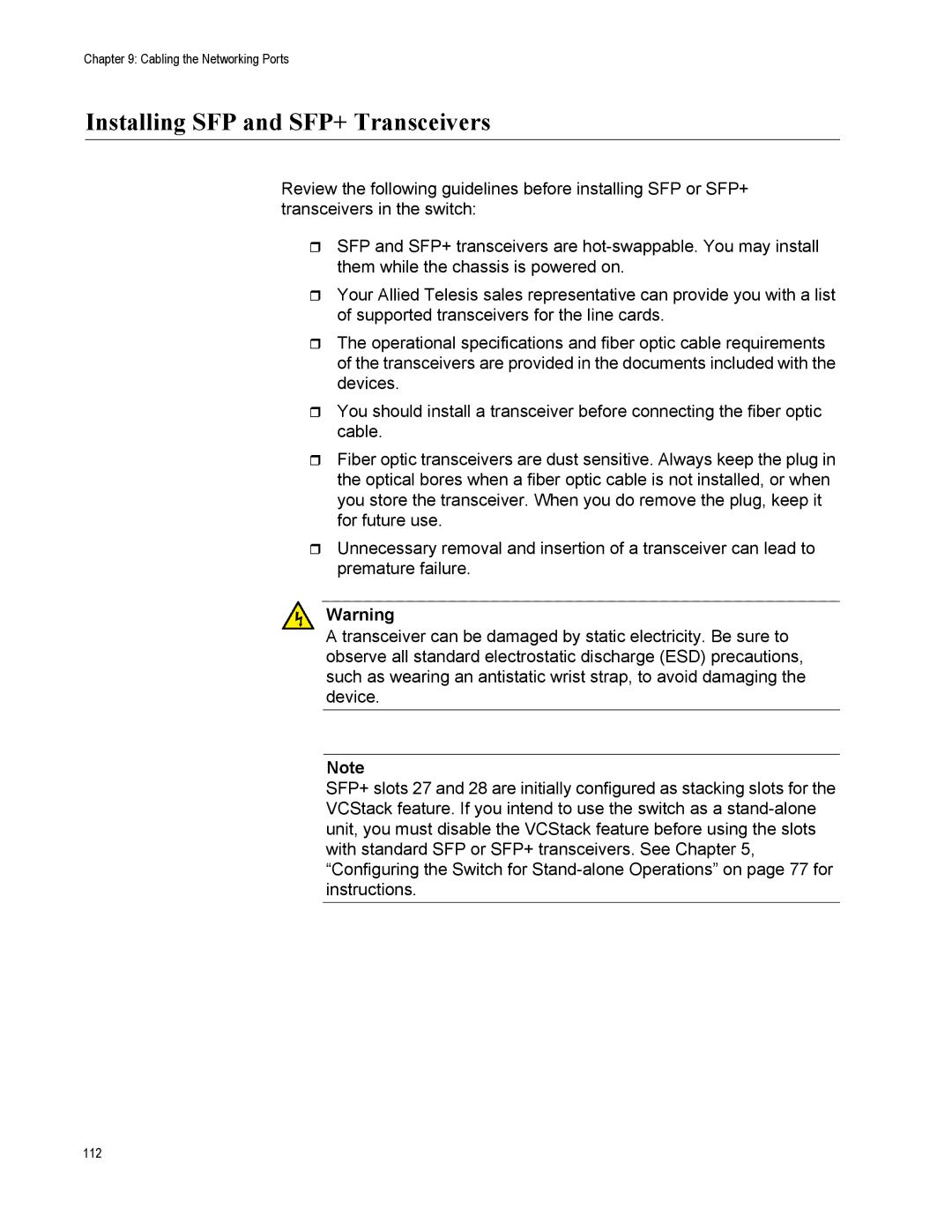
Chapter 9: Cabling the Networking Ports
Installing SFP and SFP+ Transceivers
Review the following guidelines before installing SFP or SFP+ transceivers in the switch:
SFP and SFP+ transceivers are
Your Allied Telesis sales representative can provide you with a list of supported transceivers for the line cards.
The operational specifications and fiber optic cable requirements of the transceivers are provided in the documents included with the devices.
You should install a transceiver before connecting the fiber optic cable.
Fiber optic transceivers are dust sensitive. Always keep the plug in the optical bores when a fiber optic cable is not installed, or when you store the transceiver. When you do remove the plug, keep it for future use.
Unnecessary removal and insertion of a transceiver can lead to premature failure.
Warning
A transceiver can be damaged by static electricity. Be sure to observe all standard electrostatic discharge (ESD) precautions, such as wearing an antistatic wrist strap, to avoid damaging the device.
Note
SFP+ slots 27 and 28 are initially configured as stacking slots for the VCStack feature. If you intend to use the switch as a
112
